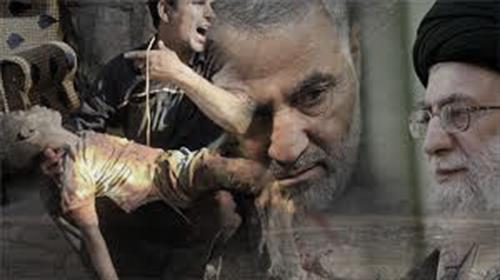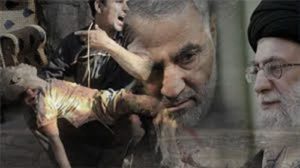
 By Heshmat Alavi
By Heshmat Alavi
The American Thinker, Jan. 29, 2017 – Despite the boasted rhetoric about the agreement reached in the Astana talks over the Syria ceasefire, this latest stage unveiled the limits involved parties face in bringing an end to the six-year war. Even Russia’s chief negotiator at the discussion reached the point of complaining, more than once, about diverse complications. And the main obstacle remains Iran, due to the fact that a true ceasefire in Syria should spell the end of its foothold.
The talks have even been dubbed a diplomatic coup, with all three sponsors, Moscow, Ankara, and Tehran accused of seeking separate objectives. The truth is there is no ceasefire thanks to Iran’s support for Syrian dictator Bashar Assad. Despite the so-called “ceasefire pact” sealed on December 30th, pro-Assad forces backed by Iran — including the Lebanese Hizb’allah — have continued attacks on the besieged rebel-held area of Wadi Barada near Damascus.
The Syrian regime has resorted to the ridiculous excuse that al-Qaeda-affiliated “terrorist groups” are in control of Ain al-Fijeh, a small town in Wadi Barada. This despite locals reporting only a “tiny minority” of such elements being present. It is thus crystal clear that neither Assad, nor his Iranian masters, have ever sought a meaningful ceasefire in Syria.
In other areas, regime warplanes launched further airstrikes targeting rebel-controlled areas in west Syria, leaving 12 dead in one area alone, according to the Syrian Observatory for Human Rights.
The fact is that the Astana talks have left many loopholes, and this is exactly what Iran will exploit to plunge the entire process into utter failure.
• No details are available about a mechanism to monitor a supposed ceasefire.
• Political issues failed to achieve any tangible progress and the talks are described as narrowly focused.
• One senior Western diplomat criticized the entire initiative as “not very serious,” adding, “You don’t seal a ceasefire in two days.” There are no indications of any work on modalities, observers, mechanisms, maps, and so forth.
• No document has been signed by Syrian opposition or regime representatives, the two parties who actually have to reach an arrangement.
• While the agreement promises a separation of rebel forces into legitimate opposition and terrorists, no specific method is laid out over how, and according to what merits.
Russia may be considered the main benefactor of the talks, especially since the U.S. cited transition duties and participated only as an observer. Iran is amongst those tasked to monitor the ceasefire, while it is obvious Iran-backed Shiite militias, already accused of violating this ceasefire, will seek to exploit the numerous Astana agreement loopholes.
Even the next date set for future talks between Syrian opposition and regime delegations, Feb. 8 in Geneva, lacks firm confirmation. The Astana negotiations ultimately did not go as planned due to different interests pursued by all three sponsors, proving that Washington and the Gulf States must take part in any future effort.
Even such a goal encounters difficulty due to stark differences seen between Russia and Iran over the United States possibly taking part. Moscow is in favor of Washington, under the Trump administration, taking part, while Iran flatly rejects the proposal.
“They (the Russians) can now see how difficult their partners are,” one Western diplomat described, according to Reuters.
“They are finding a lot of obstacles from Hezbollah forces, Iran and the regime,” explained Mohammed Alloush, head of the Syrian opposition delegation.
Western diplomats have also voiced concerns, viewing Iran as a main obstacle to progress. Uncertainty is the least that can be said about Tehran’s commitment to what can hardly be described as a ceasefire.
At a time of concerns regarding Iran’s involvement in Syria, including a conglomerate of militias and Assad forces continuing to launch attacks on civilians in rebel-held areas, there are serious questions and doubts over Tehran’s legitimacy as a broker in this entire ordeal.
As seen over the past four decades, Tehran thrives on two pillars of domestic crackdown and provoking unrest across the Middle East. This leaves the international community lacking an obvious solution.
“The regime in Tehran is the source of crisis in the region and killings in Syria; it has played the greatest role in the expansion and continuation of ISIS. Peace and tranquility in the region can only be achieved by evicting this regime from the region,” said Iranian opposition leader Maryam Rajavi , President of the National Council of Resistance of Iran, an umbrella group of dissidents including the People’s Mojahedin Organization of Iran (PMOI/MEK).
Iran’s meddling report card in Iraq, Lebanon, and Yemen proves this is the sole solution that can render a lasting ceasefire and pave the path to genuine peace.
Heshmat Alavi is a political and rights activist. His writing focuses on Iran, ranging from human rights violations, social crackdown, the regime’s support for terrorism and meddling in foreign countries, and the controversial nuclear program.

